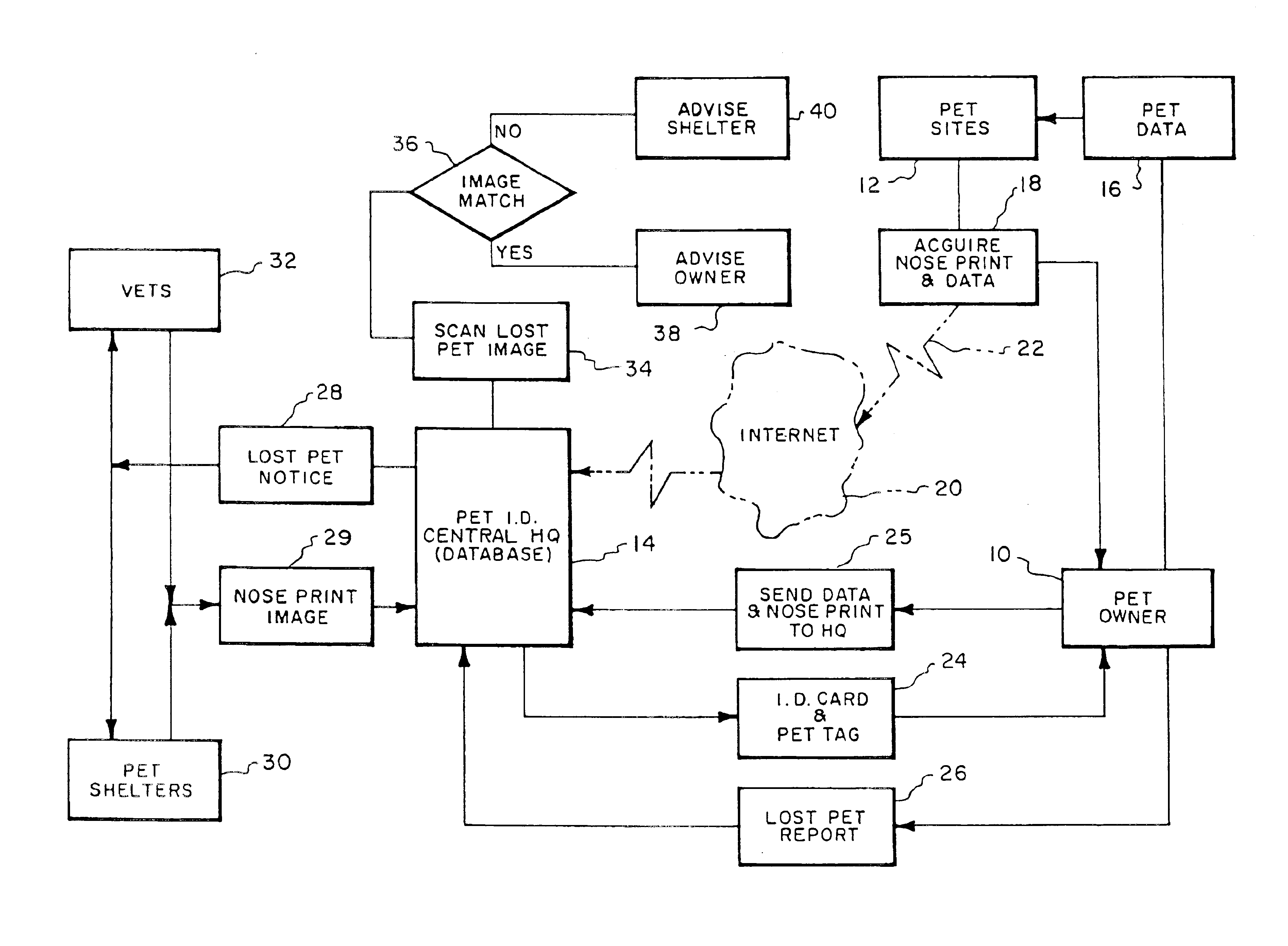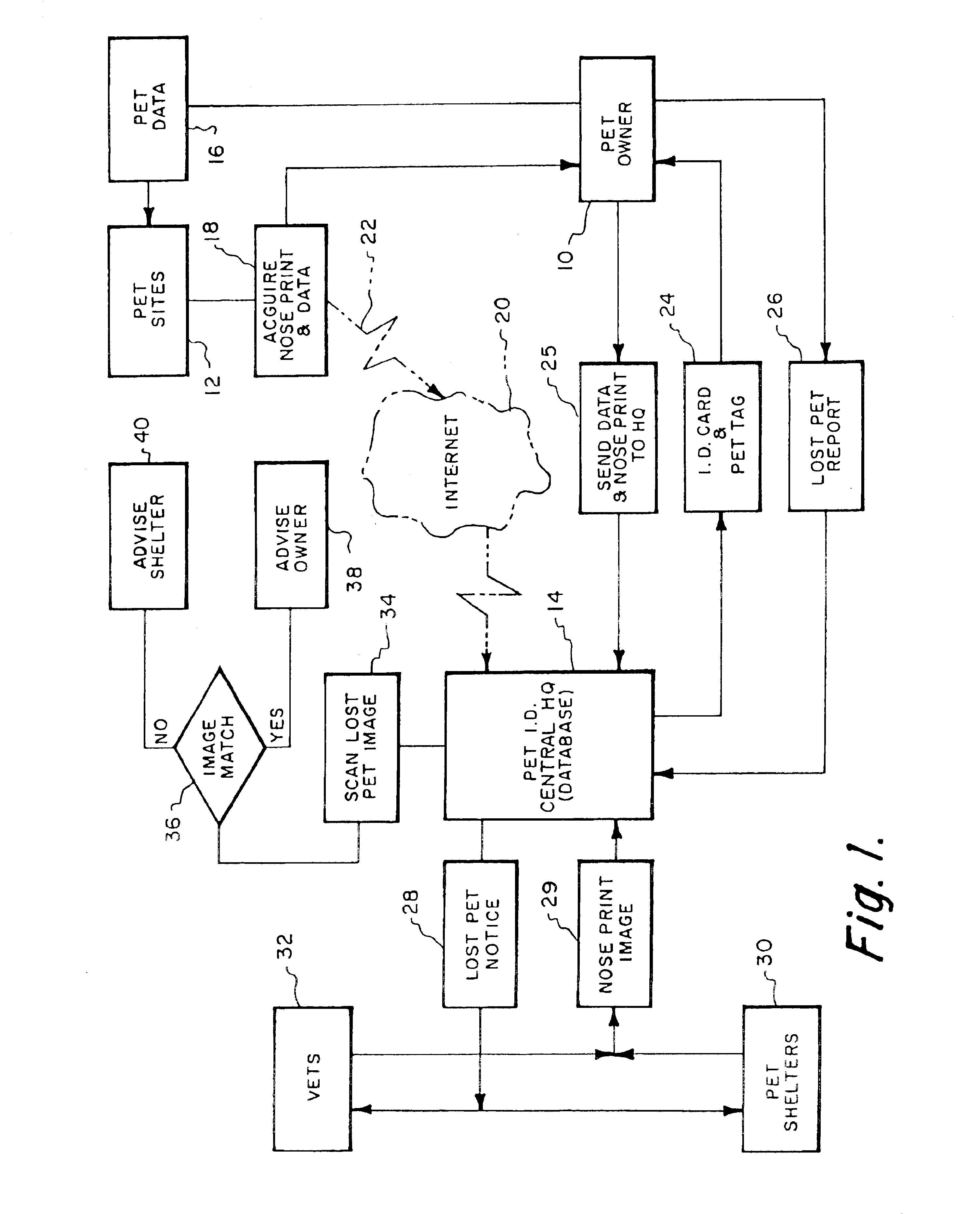Pet identification system and method
a technology for identification systems and animals, applied in the field of methods and systems for identifying animals, can solve the problems of difficult to obtain a nose image with them than, limited skill of the dog owner taking the photo of the dog's nose, and high probability of errors
- Summary
- Abstract
- Description
- Claims
- Application Information
AI Technical Summary
Benefits of technology
Problems solved by technology
Method used
Image
Examples
example 1
MATERIALAMOUNTGlycerine23,866gramsFeCl3 6H2O5,818gramsFeCl2 4H2O763gramsAerosol OT8ml
The hydroxyaromatic developer compound that forms the marking reaction with the metal salt is impregnated onto a substrate suitably a fibrous substrate, such as a paper sheet or noseprint ID card 80 shown in FIG. 7 by impregnation from solution. The card 80 can have a data receiving area 82. The marking solution and a noseprint receiving area need only be impregnated into the noseprint portion 84 of the card to form an impregnation field 86.
The metal salt is preferably a salt of a transition metal, such as iron, titanium, vanadium, chromium, magnesium, cobalt, nickel, copper, molybdenum, tungsten, and the like with an anion, such as ferride, citrate, sulfate, nitrate, stearate, acetate, formate, phosphate and the like.
The preferred developing ingredients are quinolinol derivatives, preferably 8-hydroxy-quinoline and various substitute derivatives thereof alone or in combination with a polyhydroxy ph...
example 2
MATERIALAMOUNTDenatured Alcohol1540MIPropyl Gallate240grams8-Hydroxy-Quinoline15.75gramsAzelate Acid60gramsCab-O-Sil M57.5grams
The noseprint cards are coated with this solution or preferably imprinted by means of the water fountain of an offset press on a basis of 0.01 to 10 pounds of impregnating solution for 3,000 square feet of cards. It has been determined that for normal cards and good imaging, the coating basis can generally be 0.5 to 1.0 pounds per 3,000 square feet of cards.
Noseprint of a dog's nose can be made by the procedure illustrated in FIGS. 6(a) through 6(f).
Layout the necessary supplies before beginning to noseprint your dog. One person can easily perform the procedure but if two people are available that would make the process easier.
Hold the dog's muzzle 90 firmly and wipe and dry the dog's nose with a towel 92 (FIG. 6(b)) of any absorbent material in order to eliminate excess moisture.
Once dry, apply the Pad Towlette applicator 94 to the nose holding the muzzle 9...
PUM
 Login to View More
Login to View More Abstract
Description
Claims
Application Information
 Login to View More
Login to View More - R&D
- Intellectual Property
- Life Sciences
- Materials
- Tech Scout
- Unparalleled Data Quality
- Higher Quality Content
- 60% Fewer Hallucinations
Browse by: Latest US Patents, China's latest patents, Technical Efficacy Thesaurus, Application Domain, Technology Topic, Popular Technical Reports.
© 2025 PatSnap. All rights reserved.Legal|Privacy policy|Modern Slavery Act Transparency Statement|Sitemap|About US| Contact US: help@patsnap.com



